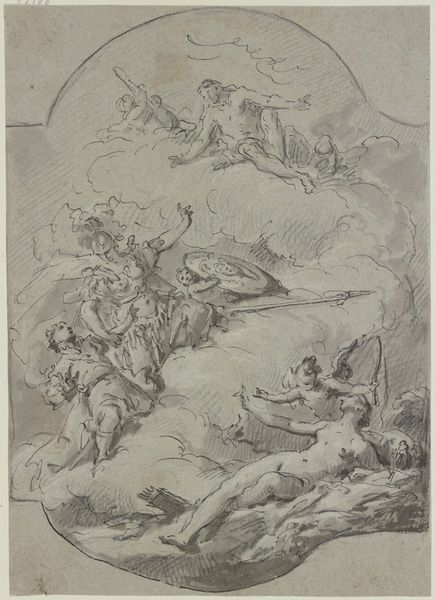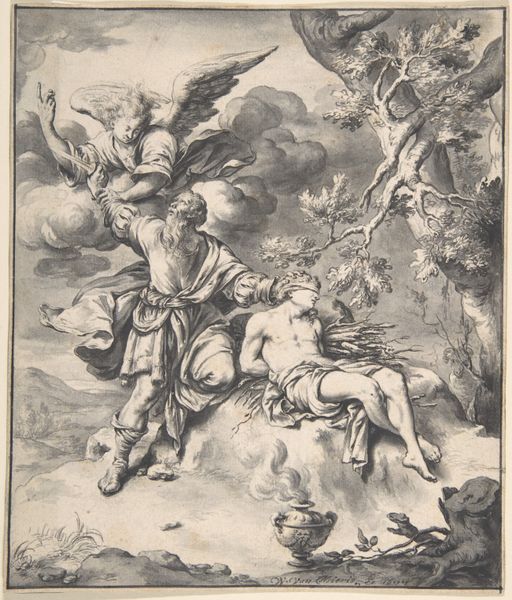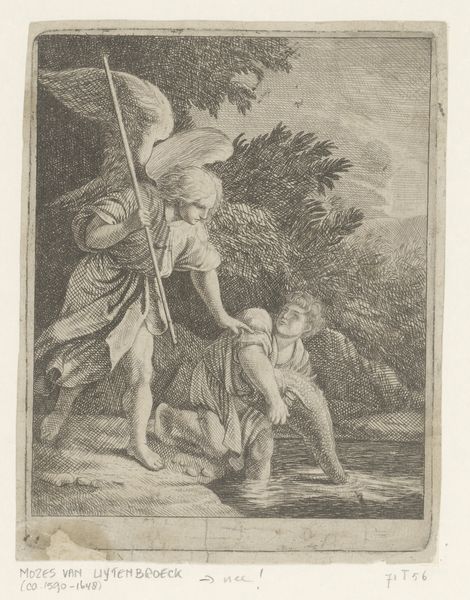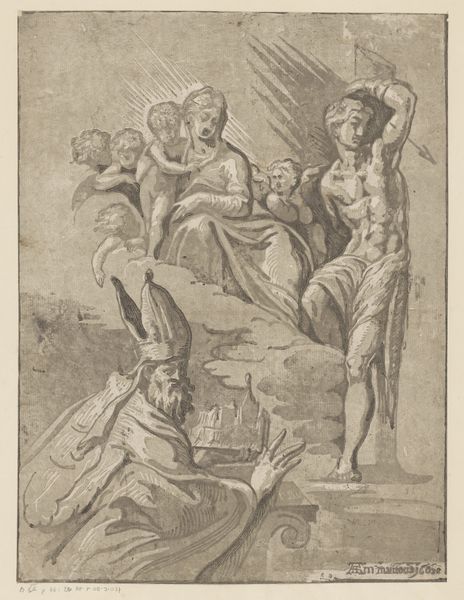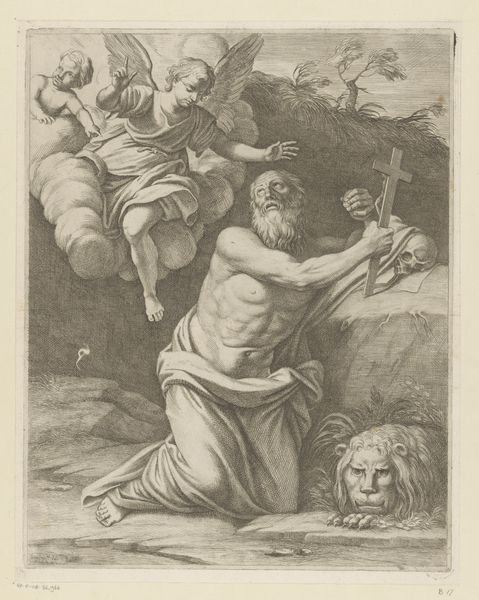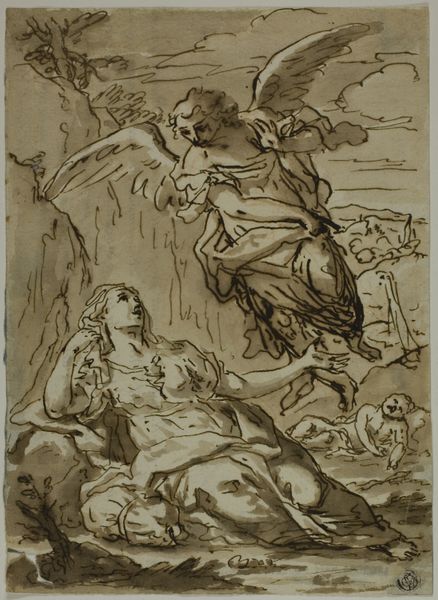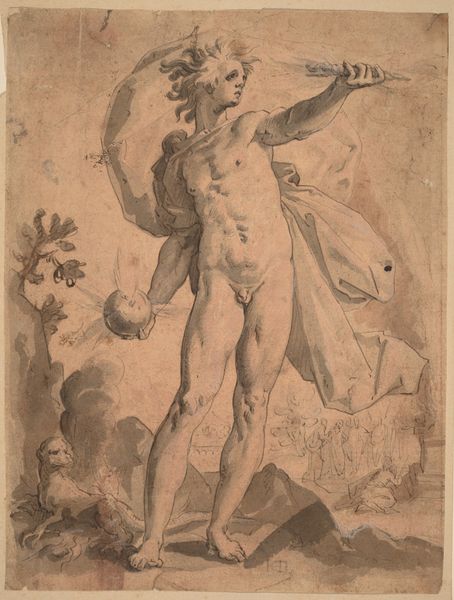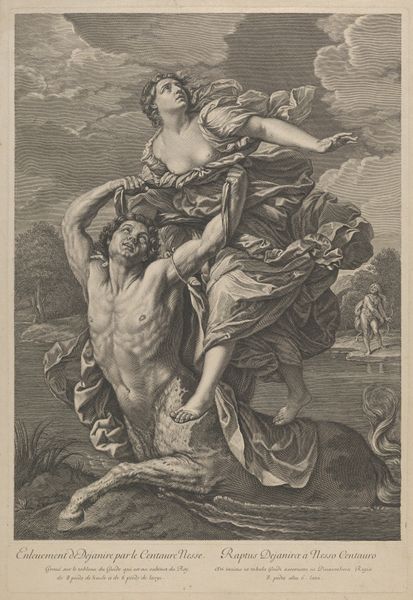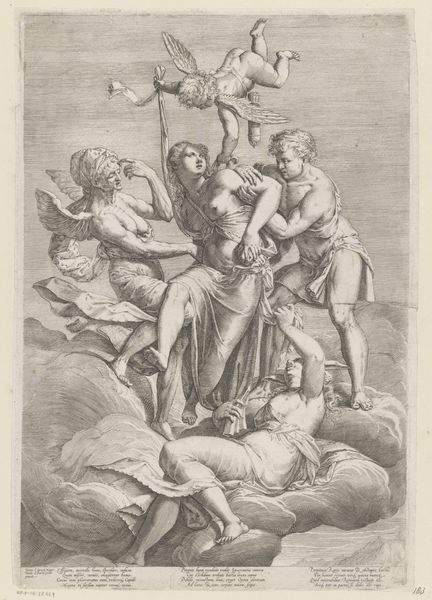
Apollo and Daphne: Design for a Wall or Ceiling Panel 1700 - 1800
0:00
0:00
drawing, print, ink
#
drawing
#
allegory
#
ink painting
# print
#
ink
#
history-painting
#
rococo
Dimensions: 13-1/8 x 7-1/4 in. (33.3 x 18.4 cm)
Copyright: Public Domain
Editor: This drawing, “Apollo and Daphne: Design for a Wall or Ceiling Panel,” created between 1700 and 1800 by an anonymous artist, uses ink to capture a mythological scene. I’m immediately struck by its delicate, almost ethereal quality, fitting for a ceiling. What can you tell me about how this would have functioned within its time? Curator: It's intriguing to consider how this design reflects the aspirations of its patron and audience. Think about the Rococo style; it’s decorative, yes, but also intensely political. Who might commission a piece like this, and what messages about their own power or sophistication would they hope to project through classical allegory? Editor: So, beyond pure decoration, this image of Apollo and Daphne speaks to the patron’s self-image? Curator: Precisely. The placement is key; imagine this on a ceiling. What statement is made by looking up to figures of mythology, power, and transformation? How does it tie into the rise of academies and the establishment of 'good taste'? Editor: It creates a sense of awe and maybe aligns the patron with those powerful mythological narratives. Were there specific political meanings associated with Apollo and Daphne that might be relevant? Curator: Often, the theme of transformation was read alongside ideas of power, but also artistic ability. In some eras Daphne transforming was read as divine protection from unchecked power, as Apollo sought to claim her. Where does the viewer's sympathy lie and what did that say about societal values? What’s transformed, and for what reasons, becomes a crucial socio-political question when discussing a scene like this. Editor: It’s amazing how a seemingly simple mythological scene can reveal such complex cultural values! I hadn't considered that the act of 'looking up' was a key part of its message. Curator: Indeed, thinking about the audience and the cultural dialogue the work participates in can unlock incredible layers of meaning. This makes looking at it more engaging!
Comments
No comments
Be the first to comment and join the conversation on the ultimate creative platform.


